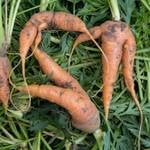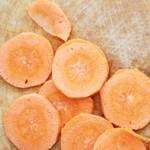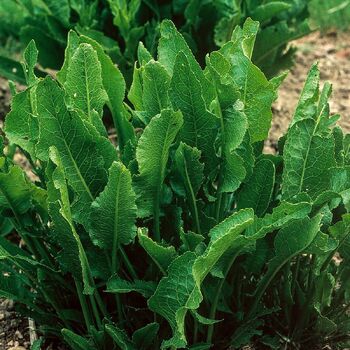
How to Grow Horseradish Roots
Grow Guide #2344
Family: Brassicaceae
Binomial name: Armoracia rusticana
Life Cycle: Perennial
This 'How to Grow' guide details everything a home gardener needs to know to plant, grow and care for Horseradish (Armoracia rusticana).
When to Plant Horseradish
Horseradish is a warm season crop. Use the table below to identify the best time of year to plant horseradish in your climate.
| JAN | FEB | MAR | APR | MAY | JUN | JUL | AUG | SEP | OCT | NOV | DEC | |
|---|---|---|---|---|---|---|---|---|---|---|---|---|
| Cool | ||||||||||||
| Temperate | ||||||||||||
| Sub-Tropical | ||||||||||||
| Tropical | ||||||||||||
| Arid |
Preparation
Horseradish plants are best grown in full sun. Choose a location that will receive at least 6 hours of full sun each day.
Horseradish plants need a loose, well drained soil enriched with organic matter. Prepare soil by weeding it thoroughly, digging it over to at least a spade’s depth to loosen the soil, and adding aged animal manure or compost. Organic matter can be dug into heavy soil to lighten it so roots can grow freely. Keep the area free of weeds until planting. Learn more about preparing soil for planting here.
Note: Horseradish plants can be difficult to eradicate once they are established in the garden. Choose a permanent position in a garden bed or grow them in containers to prevent them spreading into unwanted areas.
Horseradish plants can be grown in containers. If possible choose a variety that’s recommended for container growing. Use a good quality potting mix and make sure your container is large enough for mature plants; a minimum of 40 litres is recommended for horseradish. During the growing season, keep in mind that container grown plants may need additional fertiliser to encourage healthy growth.
How to Plant Horseradish
- Make a shallow trench 3cm deep and as long as the root fragment you are planting.
- Plant the root horizontally. If there is a shoot, plant the root with the shoot pointing up.
- Cover the root with soil.
- Space roots 30cm apart.
- Water in well.
- Keep soil moist until the first leaves appear.
How to Grow Horseradish
Horseradish plants may need watering during the growing season. Water when the soil is dry about 5cm below the surface (test this by scratching away a little soil with your finger). Water deeply in the early morning or late afternoon. Avoid watering the leaves of plants to avoid fungal diseases. Learn more about watering here.
If soil was well prepared no extra fertiliser should be necessary. Fertilising can result in excessive leaf growth at the expense of roots forming. In poor soil use a fertiliser low in nitrogen and high in phosphorus, such as blood and bone, applied at the recommended rate.
How to Harvest Horseradish
Horseradish should be ready to harvest in approximately 240 days. For larger roots plants can be left undisturbed for two or more seasons.
Horseradish roots are ready to harvest in late autumn or early winter when the leaves have died back. Use a garden fork to gently lift the whole plant from the ground, shaking off any excess soil. Make sure all small side roots are removed if you don't want new plants to grow in the same spot next spring.
Horseradish can be stored short term in a perforated plastic bag in the fridge or in damp sand in a cellar. For longer term storage, horseradish can be grated into vinegar or pickled.
Common Problems when Growing Horseradish
Like all plants, horseradish is susceptible to some pests, diseases and other problems. Below is a list of the most common problems gardeners encounter when growing horseradish plants:
 Cabbage moth and cabbage white butterfly have white or grey wings with distinctive markings. They lay their eggs on the underside of leaves. Their caterpillars feed on the leaves, creating large holes and sometimes skeletonising the leaves. Use netting to exclude butterflies and moths or decoys to deter them. Pick the caterpillars off the plants or use an appropriate spray in a selective and targeted way. Read more about cabbage moth and cabbage white butterfly here.
Cabbage moth and cabbage white butterfly have white or grey wings with distinctive markings. They lay their eggs on the underside of leaves. Their caterpillars feed on the leaves, creating large holes and sometimes skeletonising the leaves. Use netting to exclude butterflies and moths or decoys to deter them. Pick the caterpillars off the plants or use an appropriate spray in a selective and targeted way. Read more about cabbage moth and cabbage white butterfly here. Forked roots are usually caused by stony or heavy soil such as clay. The roots cannot grow freely in the soil or hit rocks or other obstacles and split into two. Cultivate the soil well before planting, dig in some coarse sand or compost to lighten the soil, or grow round or short varieties suited to heavy soil.
Forked roots are usually caused by stony or heavy soil such as clay. The roots cannot grow freely in the soil or hit rocks or other obstacles and split into two. Cultivate the soil well before planting, dig in some coarse sand or compost to lighten the soil, or grow round or short varieties suited to heavy soil. Small roots can be the result of sowing too thickly or over fertilising. Thin seedlings to give roots adequate space to grow. Do not fertilise plants as this may encourage the growth of foliage at the expense of roots.
Small roots can be the result of sowing too thickly or over fertilising. Thin seedlings to give roots adequate space to grow. Do not fertilise plants as this may encourage the growth of foliage at the expense of roots. Tough roots usually indicate that the roots were harvested too late. Harvest roots when they are young and tender.
Tough roots usually indicate that the roots were harvested too late. Harvest roots when they are young and tender.


.png)



